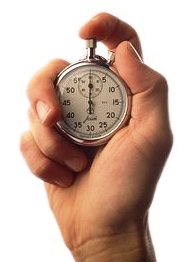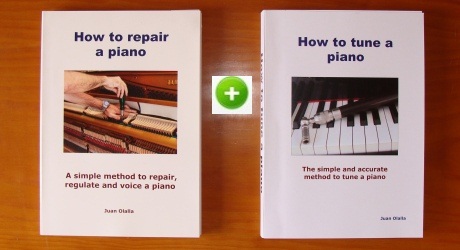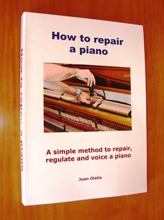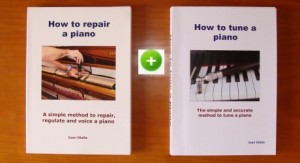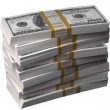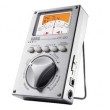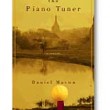Can you study piano in a digital piano keyboard? Digital versus Acoustic.
Time ago, while examining an old piano owned by a lady who wanted an estimate to decide if it was worth it to repair, she came out with this question: Is it possible to use an electric piano for a child who is going to take piano lessons for the first time? Can you study piano in an electric digital piano?
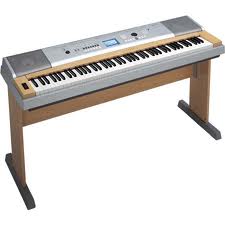 What a question for a piano tuner! Clearly the lady was pondering the possibility of buying a cheap digital thing in case the estimate for repairing and tuning the old piano was too high. I don’t have the habit of cheating my customers, but neither I am fond of throwing stones over my own roof. Sometimes truth match our own interest, and this was one of those rare occasions. So, sure not to be bias and well in peace with my concious, the answer to the odd question was obviously: (yes, you guessed it), No!
What a question for a piano tuner! Clearly the lady was pondering the possibility of buying a cheap digital thing in case the estimate for repairing and tuning the old piano was too high. I don’t have the habit of cheating my customers, but neither I am fond of throwing stones over my own roof. Sometimes truth match our own interest, and this was one of those rare occasions. So, sure not to be bias and well in peace with my concious, the answer to the odd question was obviously: (yes, you guessed it), No!
Undoubtedly digital pianos have qualities that make them attractive to many people. For example, its lighter weight and smaller size makes them easier to handle and place them anywhere in the house. They never get out of tune and don’t need servicing. Can easily change pitch, so you don’t need to transpose. Can play orchestral sounds, make rhythms and even record and reproduce what you play. Anybody can become an accomplish pianist just by pressing a key….! Or at least that’s what it appears.
Comparing the impressive array of features that digital piano has with that of the acoustic one, becomes clear that the digital piano wins by a landslide. So, what strange reason could motivate somebody to buy a traditional piano instead of a digital one? What disadvantage has the digital piano, if any?. Well, actually just one, and that is that the “digital piano” is not really a piano.
In my humble opinion, the term “digital piano” is inherently wrong and leads to confusion. Perhaps traditional piano makers shouldn’t allow “digital piano” makers to use the name “piano” to market their products. Same as they do with wines and cheeses producers, to ensure the authenticity of their products and guarantee its proper designation. No kidding, I’m serious. From here I propose the idea.
A real piano is made by craftsmen. Noble materials are used in its construction, different types of wood like mahogany, walnut, ebony, spruce etc. Also, steel, brass, leather, felt, ivory for the keys (no longer used) and so on. Its operation is completely mechanical or “analog” as they say now. The experience of playing a real piano has nothing to do with that of playing a digital instrument. The gentle subtle touch of the keys, the full rich authentic sound (even with its imperfections), the warmth and the feeling that conveys, the looks, the smell of wood, and so on. No, it is not comparable at all. Maybe I am a romantic, but I prefer the touch of wood rather than plastic.
In contrast, a digital piano is really a computer with added keys, cold and with no soul. It’s sound, although it can be nice, does not have the wrapping richness and tonal quality of the real thing. For the piano player, a major drawback of digital pianos is it’s poor key touch. Although some digitals try really hard to replicate the keyboard dynamics of acoustic pianos, never comes near as good as the authentic thing. In brief, from a serious musician point of view, a digital piano is a poor alternative to a real piano
Another very important point to take into consideration is the durability and life span of the instrument. An acoustic piano is very strong and good quality ones are made to last a long long time. Providing you take a minimum care (just tuning once a year), your piano will last a life time. The piano becomes a member of the family and can easily be passed to the next generation. I have known pianos dating from the 20’s (last century) in pristine condition.
On the other hand, an electric piano that is played reasonably often, will only last a few years. As it happens nowadays with any electric appliances, digital pianos are made so that they will be broken soon. Guess way? so that you buy again, naturally. The fact is, a digital piano can not take the heavy pounding of an acoustic piano. In the life span of a decent acoustic you could end buying a good number of electric ones. So, where is the saving?
So, going back to the original question, can you use an electric instrument to study piano? I sincerely believe than using an electronic keyboard to study piano is not advisable. I think it is important for the student to get accustomed from the beginning to play and appreciate the subtleties of a real piano. Also, it is a fact that a good instruments motivates the piano student and improves the rate of success in piano studies.
Probably you have guessed by now that am not precisely a digital piano lover… Then, is this a hatchet to digital electronic keyboards motivated by the obvious corporate interest? Not really, the idea is to objectively clarify the points. Neither digital pianos can be compare with real acoustic pianos nor real pianos can be compare with the digitals. This is so simply because they are different things for different purposes. Long life the piano!
Copyright © Juan Olalla 2011
Has this post been helpful to you? Do you have any question? You are welcome to leave a reply, your opinion and/or suggestions are highly appreciated. Thanks
